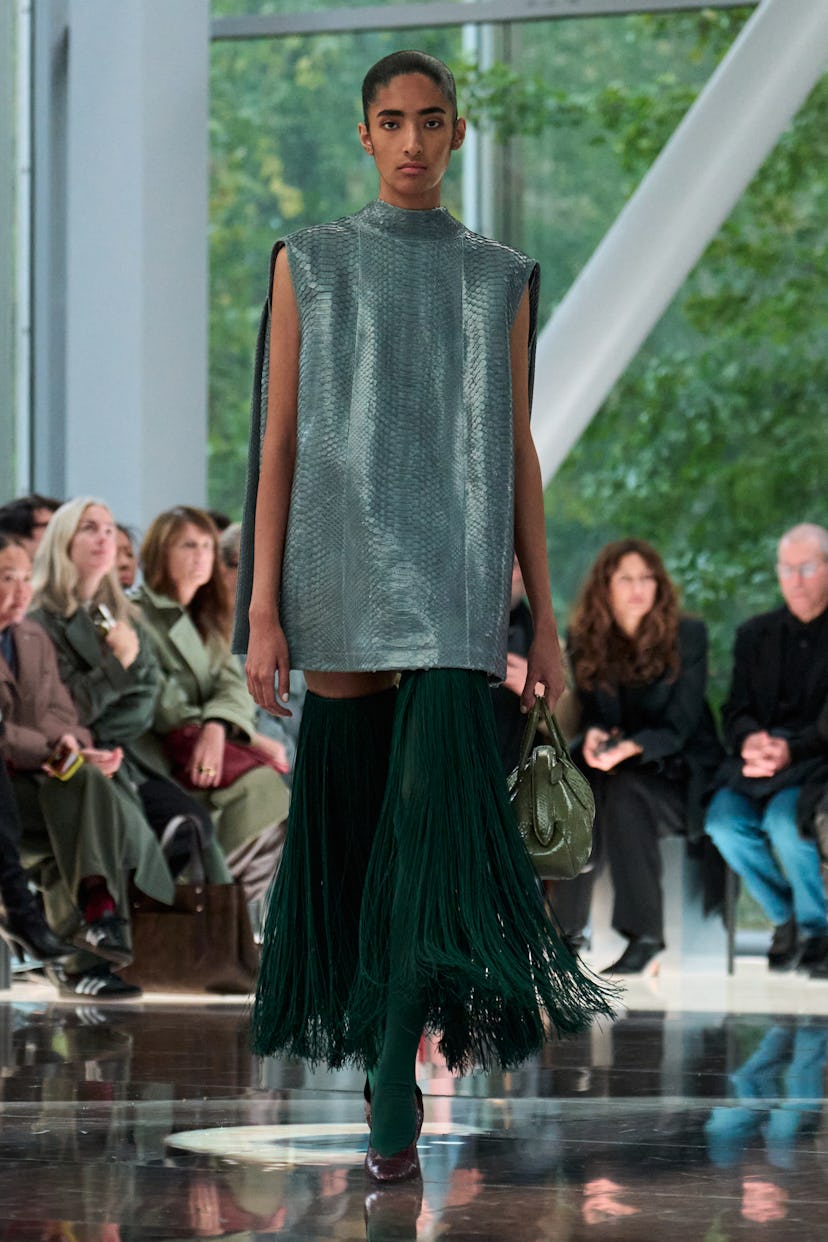Since he took over Alaïa in 2021, Pieter Mulier has shown a knack for not just putting out desirable product (see: the oft-imitated Le Teckel, which reignited interest in east-west bags), but also conveying a sense of luxury with ease. His approach hasn’t changed since he began at the storied French fashion house; in an interview during his first year on the job, Mulier told W how he doesn’t work off themes, references, or directives from marketers.
“It’s just about the clothes,” he told the magazine in 2022. “What we do is simple: beautiful, well-made clothes. And for me, it’s very fresh. Nobody else does that.”
That quote feels as applicable to his debut collection from spring 2022 as it does for his latest, presented on Saturday morning during Paris Fashion Week to an audience that included Cynthia Erivo, Gwendoline Christie, and Kim Kardashian (rocking a Kris Jenner-esque bob, we might add). In the show notes, Mulier repeated his mantra: “Alaïa is a house of simplicity and purity—intimacy, and a radical beauty,” he wrote.
Spring 2026 builds not only on the season that precedes it, the designer said, but upon every collection Alaïa has released. What we are seeing now, more than four years into his tenure, is Mulier injecting a bit more verve, even humor into the language he’s established. The assortment, as he described it, is “reduced, sculptural. Precise”—but has “an extremity to it.” The result is “uncompromising.”
Each ensemble in the spring 2026 collection demands a second look. You don’t understand its full effect until you see it from the front, back, and side. This was made clear from the get-go, when the show opened with a series of fringe leg coverings that, at first, appeared to be slim-fit trousers. But the models’ movements showed they only reached midthigh, like stockings (albeit with truly spectacular grip). There were also cocooned garments that seemed like minidresses, but were actually open-back playsuits with bloomers. (On the runway, this revealed how they were styled over high-waisted jeans.) Trousers were split open on the sides all the way down, ruffling over the exposed outside of the leg, before being tied at the ankle. It’s a cut Mulier’s done before, but it was even more exaggerated this time around.
“I’m fascinated by the idea of tension, which feels relevant for today,” Mulier wrote in the show notes. “A tension between genders, between excess and restraint, covering and revealing, between our history and our future, cultural forces.” That translates into clothes that “are drawn around the body. The sculpture is pulled against the skin—there is a sense, always, of the woman’s body within, moving, alive.” These live alongside “pieces [that] are open, free, sliced open to reveal the body, or fragments of dresses laid against the skin. Movement fractures pieces—silhouettes that shatter and regroup. Clothes that cry.”
The designer understands how to visually evoke opulence without doing too much. Boxy jackets that had raised collars which stood up all the way, almost brushing the lips; gathered jersey pants tucked into black leather heels—these were fabulous pieces without pomp or ostentation.
“Alaïa represents everything that is still good in fashion,” Mulier said back in 2022. “Alaïa is small. It is human. It is not about everything we witness as fashion nowadays. Alaïa clothes are forever, not for a season.”
